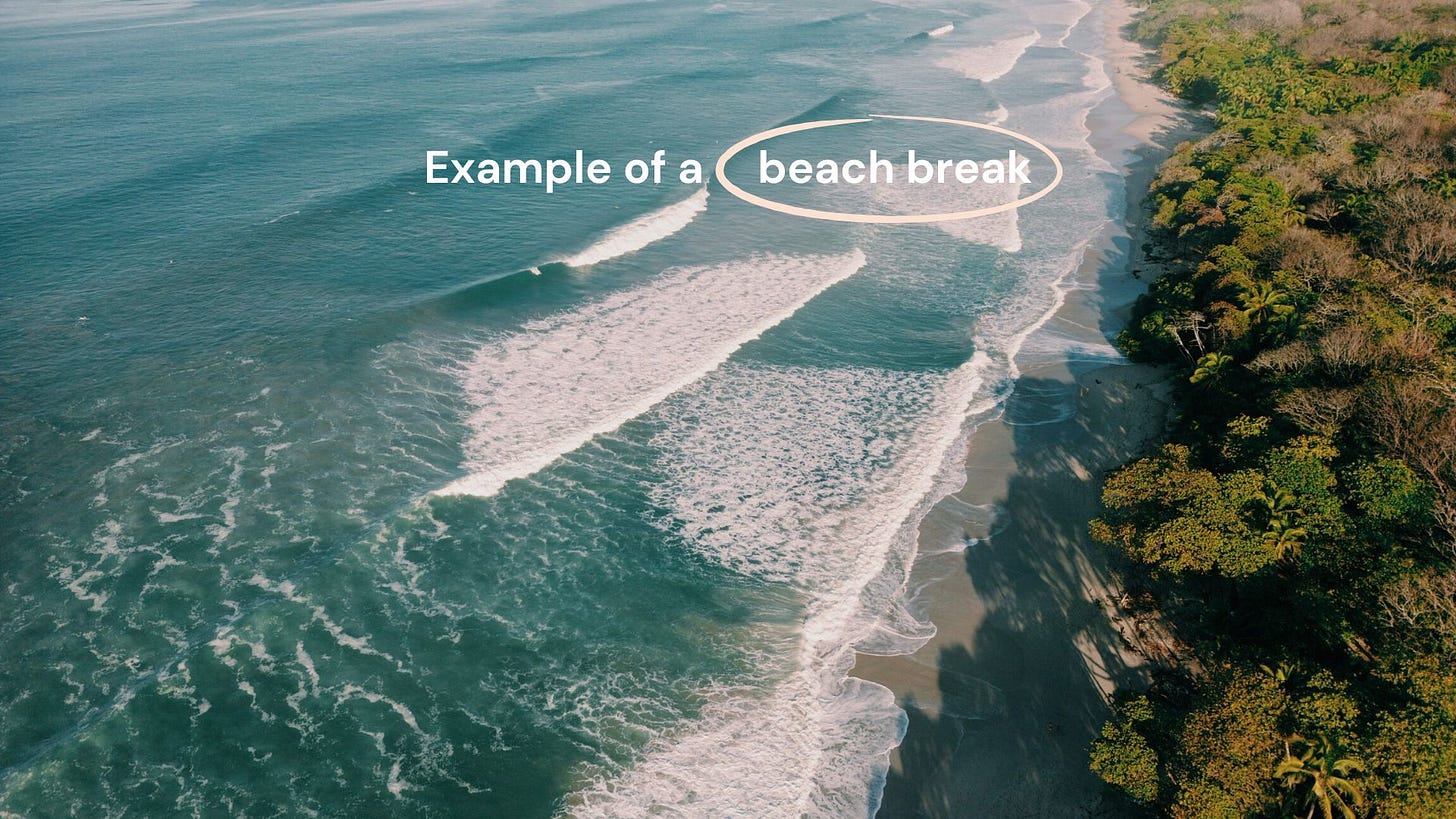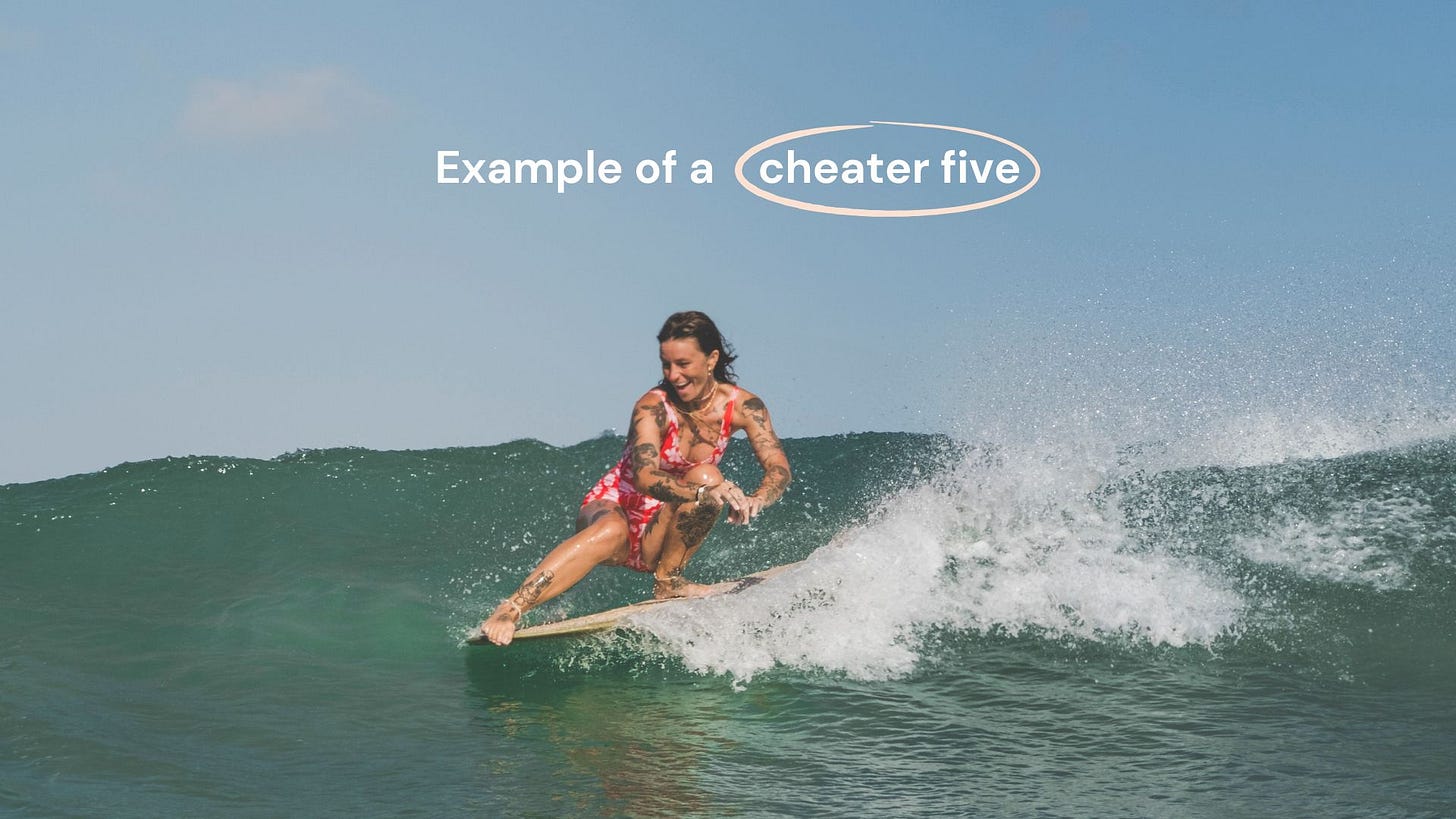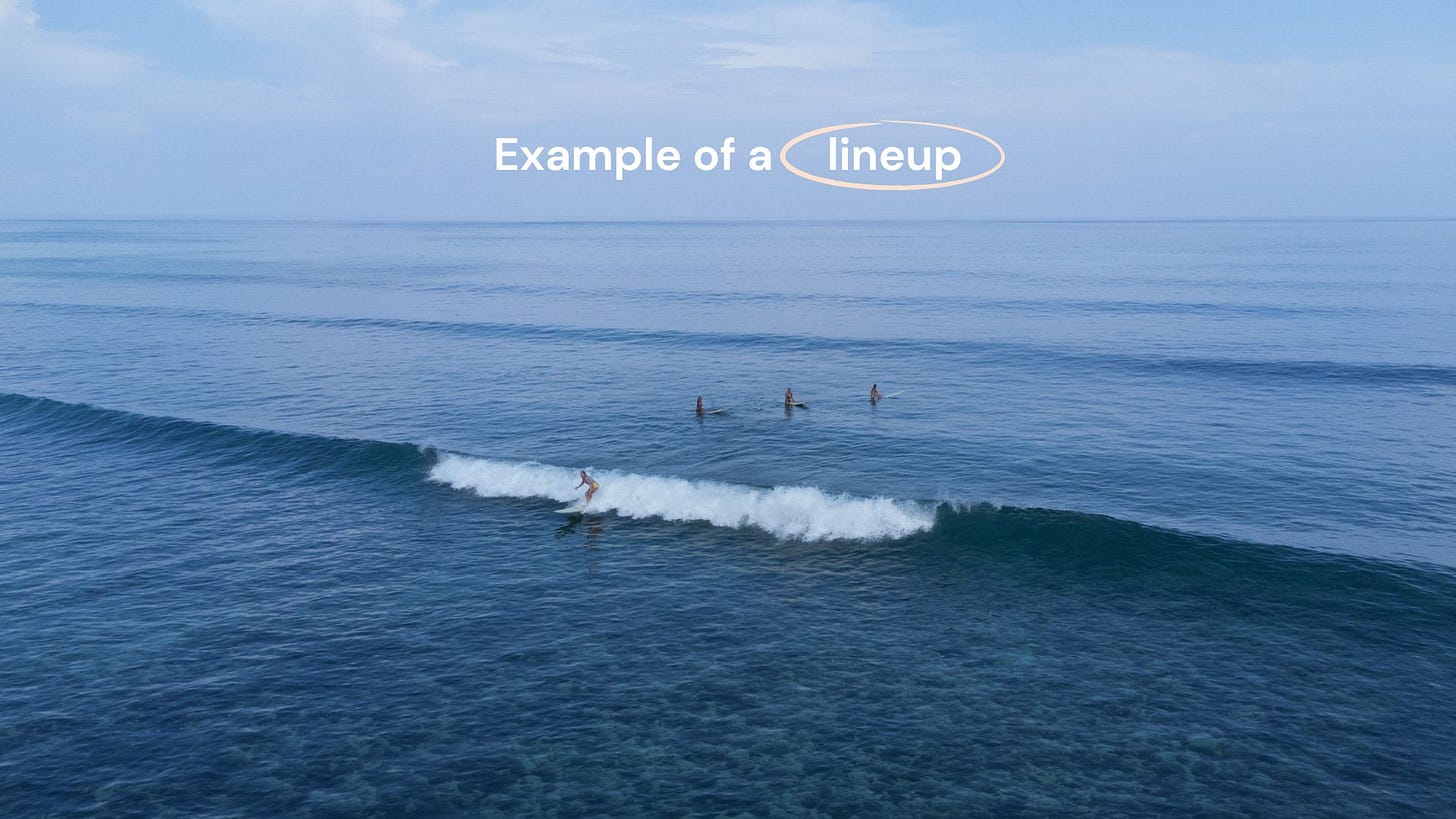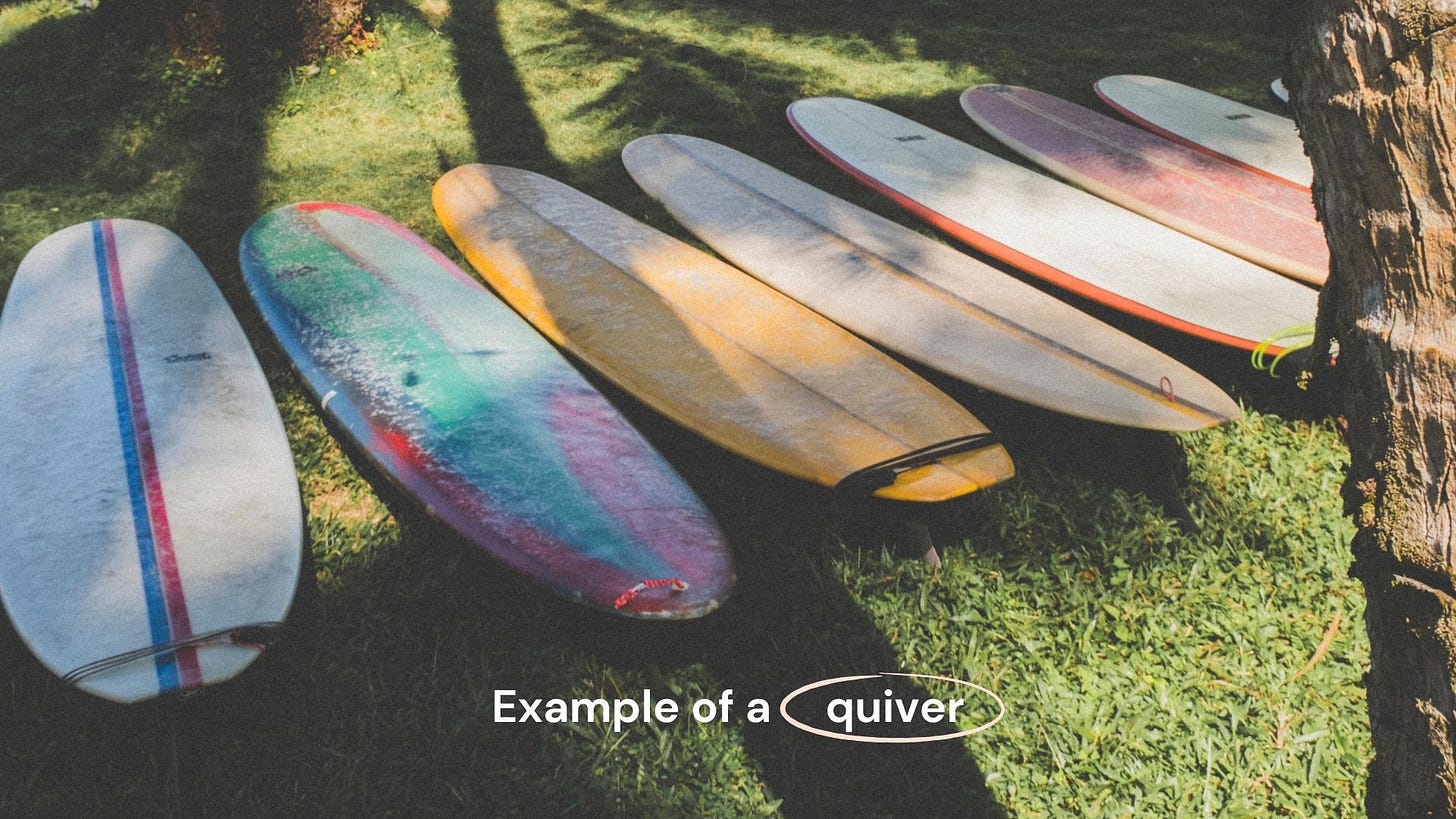Surftionary: Surf Terms for Beginners
To an outsider, surf lingo can seem like an entirely different language! Here are some of the key terms to know when you're starting out.
From waves that whisper to ones that roar, to equipment shaped by generations of surfers and techniques perfected across oceanic cultures, surfing has cultivated a rich tapestry of terminology that can feel like an alien dialect to newcomers.
If you’re a beginner surfer, your first dance with the ocean is already a heart-pounding symphony of excitement and fear. The last thing you need is to feel like you've walked into a foreign film without subtitles!
The vocabulary of surfing wasn't born in textbooks, but evolved organically in the lineup, passed down through conversations and shouted warnings across breaking waves.
It's a language where a "barrel" isn't something you store things in but a hollow sanctum of moving water that surfers chase for decades. Where "stoked" isn't just being happy—it's that soul-deep exhilaration that comes from sliding down the face of nature's most beautiful phenomenon.
Knowing this oceanic dialect does more than help you fit in—it becomes your lifeline in the water. When an experienced surfer shouts "outside!" they're not commenting on the weather; they're warning you about a larger set approaching.
Understanding these verbal cues can be the difference between catching the wave of your life and fighting for your life.
So as you wax your board and paddle out, remember that every surfer before you once stood where you stand now, trying to decipher what on earth a "cutback" or "pocket" might be. Here's your breakdown of the essential surf lexicon—your passport to becoming not just a participant, but a true conversation partner in the ancient dialogue between humans and waves.
A-B
A-Frame: A wave that breaks symmetrically, forming a peak that can be surfed on either side.
Backside: When a surf rides with his/her back to a wave.
Backwash: When a wave sweeps up the beach and returns to the ocean, sometimes colliding with incoming waves.
Bailing: Letting go of your surfboard.
Barrel: The hollow part of the wave where a surfer can ride inside the curl.
Beach Break: Waves breaking over a sandy bottom.
Bomb: A particularly heavy or large wave in a set.
Bottom Turn: The first turn at the base of a wave, setting up for maneuvers.
Breaks: The area where waves consistently break; can be categorized as reef, beach, or point breaks.
Burn: To drop in on someone or steal a wave from another surfer without priority.
C-D
Carve: A smooth, powerful turn on the wave face.
Caught inside: When you’re stuck between the shoreline and a breaking set of waves, making it hard to paddle out.
Choppy: Rough, uneven water surface caused by wind.
Channel: A deeper area of water between sandbars or reef sections where waves don’t break as much, making it easier to paddle out. Lifeguards will point them out as rip currents.
Charging: When a surfer is really giving it all, going for big waves and putting on a show.
Cheater five: A fun and stylish move in longboarding when a surfer sticks one foot (usually the front one) over the nose of the board while the back foot stays further back.
Closeout: When a wave breaks all at once, making it unrideable.
Cross-stepping: When a surfer walks up and down the board by crossing one foot over the other in a smooth, stylish way.
Curl: The part of the wave that is breaking or “curling” over.
Dawn patrol: Surfing early in the morning, usually at or before sunrise.
Ding: A crack, hole, or fracture in a surfboard.
Drop In: Catching a wave in front of someone who already has priority, considered poor etiquette.
Duck Dive: A technique for paddling under an oncoming wave.
E-F
Eat it: Wipeout or fall.
Epic: Slang for all-time surf conditions. “The waves were epic today!”
Face: The unbroken, rideable part of the wave.
Fin: A hydrofoil mounted at the trail of a surfboard to improve directional stability and control through foot-steering.
Firing: Amazing and spectacular wave conditions.
Flat: When there are no rideable waves or swell.
Foam: Whitewater.
Foamies: Soft, foam surfboards, ideal for beginners.
Frother: Someone who is constantly super excited or overly enthusiastic to surf.
G-H
Glassy: Smooth, mirror-like water surface with little or no wind.
Gnarly: Can mean amazing or intense, depending on the context. “That drop was gnarly!”
Goofy Foot: Surfing with the right foot forward.
Green Wave: An unbroken wave, perfect for catching a ride.
Heavy: When talking about surfing conditions, this means that waves are powerful, challenging, and potentially dangerous.
High Line: Riding high up on the face of the wave, close to the tip. It’s crucial for generating speed, especially on smaller or faster waves.
Hollow: A wave that is steeps and forms a tube or barrel as it breaks.
I-L
Impact Zone: The area where waves break with the most force.
Inside: The area closer to the shore where broken waves (whitewater) dominate.
Kook: A surfer (beginner or experienced) who doesn’t quite follow surf etiquette or understand the unspoken rules of the lineup.
Kick Out: Exiting a wave to avoid the break or wipeout.
Leash: A cord attaching your ankle to your board to prevent it from drifting away.
Lineup: The area beyond the breaking waves where surfers wait for waves.
Lip: The top edge of a wave that curls over as it breaks.
Localism: territorial protection of a surf spot by local surfers.
Log: Another word for longboard.
Longboard: Surfboards from 9’0 up.
O-P
Outside: The area further out to sea where waves first start breaking.
Offshore wind: wind blowing from the shore out to the ocean, holding the curl line and smoothing the wave face.
Onshore wind: wind blowing from the ocean toward shore, lowering the quality of waves.
Party Wave: A wave shared by multiple surfers, but only when everyone agrees and is skillful and confident enough to ride close to others safely.
Peeling Wave: A wave that breaks evenly from one end to the other.
Peak: The highest point of a breaking wave where surfers aim to catch it.
Point Break: Waves breaking over a point of land or rocks.
Pop-up: the quick move a surfer makes to rise from prone position to standing up on a board when taking off on a wave.
Priority: the right of way rule in the surf.
Quiver: the number/collection of surfboards owned by a surfer.
R-T
Regular foot: A surfer who rides waves with his left foot forward.
Rip: To surf very well.
Rip Current: A strong current pulling water out to sea, often near the shore. Also called rip tide.
Rail: The edge of a surfboard.
Rashguard: A form-fitting shirt made of a nylon-polyester-spandex mixture used for sun protection and to avoid skin rashes.
Reef break: A wave that breaks over rock or coral.
Section: A part of the wave that breaks ahead of the peak.
Set: A group of waves arriving together.
Shaper: A surfboard designer and creator.
Shoulder of the Wave: The less steep, rideable section of the wave next to the peak.
Stoked: Feeling extreme excitement or joy about surfing.
Stance: The surfer's feet position on a surfboard.
Stringer: The wooden material that runs down the center of the surfboard to give strength and flexibility to the foam. Also called soul.
Swell: The energy powered by strong winds that produce wave trains out at sea.
Take Off: The moment a surfer catches a wave and stands up on their board.
Tide: The rise and fall of the ocean, affecting wave size and break conditions.
Trimming: Finding the perfect surf line for speed on the wave face.
Tube: The hollow interior of a wave, also known as barrel.
Turtle roll: A surfing technique where the surfer flips the board over in front of an oncoming wave to get under it and paddle out to the lineup. Usually done with longboards.
W-Z
Wax: A paraffin-based product that is applied to the surfboard deck to increase traction and reduce slippery.
Wipeout: Falling off your board while surfing.
Whitewater: The foamy, turbulent water after a wave breaks.










